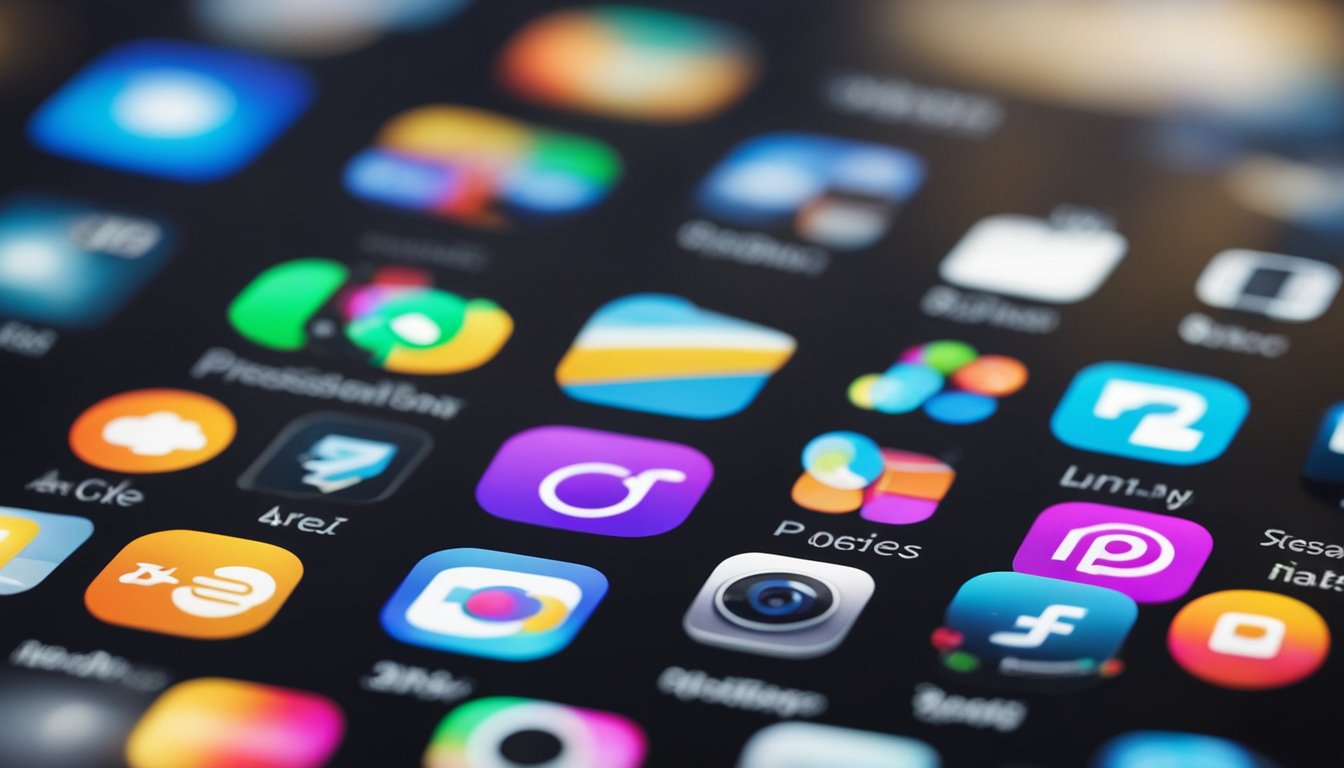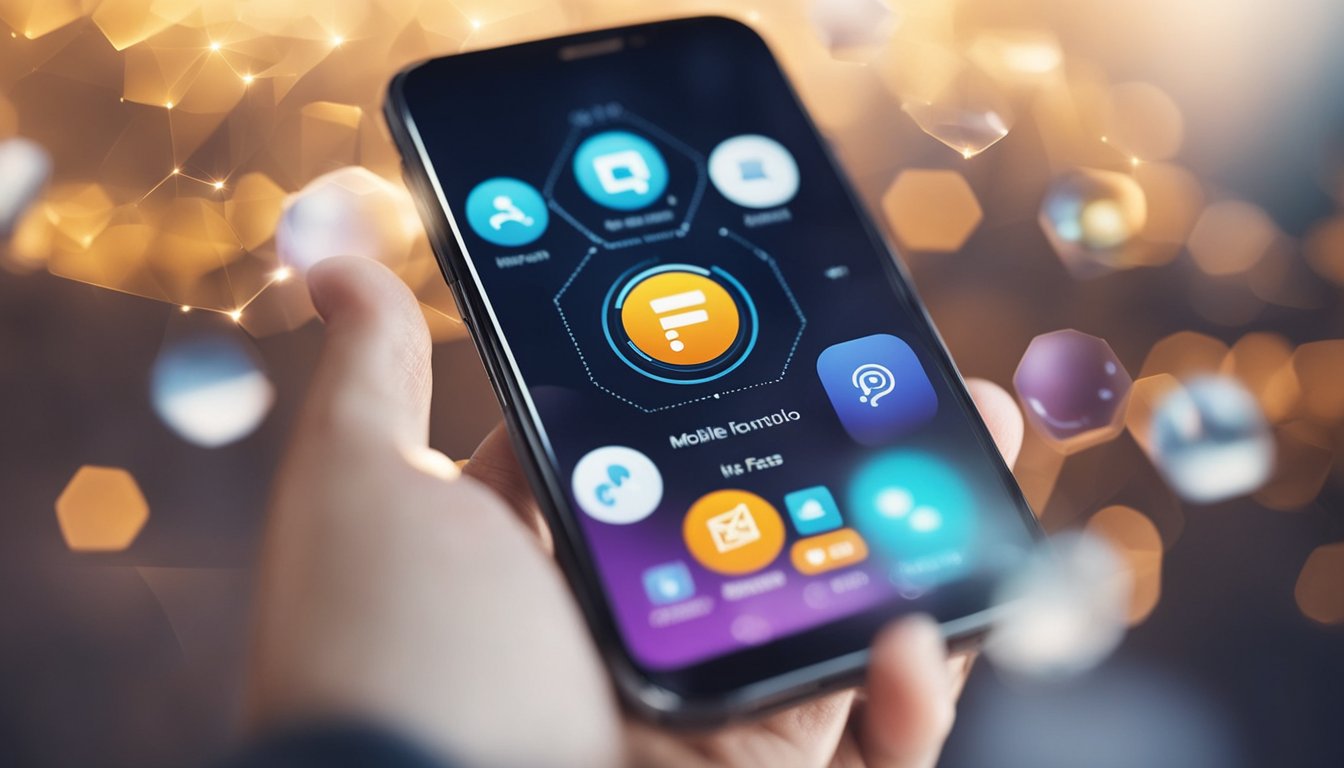Create a UserFriendly Mobile App Tips and Best Practices
Creating a mobile app that is user-friendly is crucial to its success. A user-friendly app can help increase engagement, retention, and overall customer satisfaction. As a mobile app developer, I understand the importance of designing an app that is easy to use, intuitive, and accessible to all users. In this article, I will discuss the key factors to consider when creating a user-friendly mobile app.

Understanding the target audience is the first step in creating a user-friendly mobile app. Knowing who your users are, what they want, and how they use your app can help you design an interface that meets their needs. Once you have a clear understanding of your target audience, you can start designing a user-friendly interface that is intuitive and easy to navigate.
Designing a user-friendly interface involves creating a value proposition and an elevator pitch that clearly communicates the benefits of your app. This can help users understand why they should use your app and how it can help solve their problems. Additionally, ensuring that your app is accessible and usable for all users, including those with disabilities, can help increase its overall user-friendliness.
Key Takeaways
- Understanding the target audience is crucial to creating a user-friendly mobile app.
- Designing a clear value proposition and elevator pitch can help communicate the benefits of your app to users.
- Ensuring app accessibility and usability can help increase overall user-friendliness.
Understanding the Target Audience

As a mobile app developer, it's crucial to understand the target audience before creating an app. The target audience refers to the group of people who will use the app, and it's important to know who they are, what they want, and what they expect from the app. This knowledge will help you create a user-friendly app that meets their needs and expectations.
To identify the target audience, you can conduct market research and user research. Market research involves analyzing the market and identifying the potential users of the app. User research involves gathering information about the actual users of the app, such as their demographics, preferences, and behaviors. By combining these two types of research, you can create a comprehensive understanding of the target audience.
Once you have identified the target audience, you can create a user persona, which is a fictional character that represents the typical user of the app. The user persona can help you design the app in a way that meets the needs and expectations of the target audience. You can create a user persona by gathering information about the target audience, such as their age, gender, location, interests, and behaviors.
It's important to keep in mind that the target audience may change over time, so it's essential to continually conduct research and update the user persona. By understanding the target audience, you can create a user-friendly app that meets their needs and expectations, which will ultimately lead to a successful app.
Designing a User-Friendly Interface

As a mobile app developer, I understand the importance of designing a user-friendly interface. A user-friendly interface can make or break an app's success. Here are some design principles and guidelines that I follow to create a simple, intuitive, and visually appealing user interface.
Adapting to Different Screen Sizes
One of the most important aspects of a user-friendly mobile app design is ensuring that it can adapt to different screen sizes. With so many different devices on the market, it's crucial to create an interface that looks good on any screen size. To achieve this, I make sure to use responsive design techniques and test the app on various devices to ensure that it looks good and functions properly on all screen sizes.
Choosing the Right Color and Font
Choosing the right color and font is also crucial when designing a user-friendly interface. I make sure to choose colors and fonts that are easy on the eyes and complement each other. For example, I avoid using too many bright colors or fonts that are difficult to read. Instead, I opt for a simple and clean design that is easy to navigate.
Creating a Simple and Intuitive Layout
Finally, creating a simple and intuitive layout is key to designing a user-friendly interface. I make sure to use a layout that is easy to navigate and understand. For example, I use clear labels and icons to help users quickly find what they're looking for. I also avoid cluttering the interface with too many buttons or menus, as this can overwhelm users and make the app difficult to use.
In conclusion, designing a user-friendly interface is essential for creating a successful mobile app. By following these design principles and guidelines, I ensure that my user interfaces are simple, intuitive, and visually appealing.
Ensuring App Accessibility and Usability

As a mobile app developer, I understand the importance of creating an app that is user-friendly and accessible to everyone. In this section, I will discuss some key considerations to ensure that your app is easy to use, integrates useful features, and provides an offline experience.
Making the App Easy to Use
The first step in creating a user-friendly app is to make it easy to use. This means designing a simple and intuitive user interface that is easy to navigate. Consider using clear and concise language, large buttons, and easy-to-read fonts. Additionally, make sure that your app is compatible with all devices, including smartphones and tablets.
To ensure that your app is easy to use, you should also conduct user testing. This will allow you to identify any usability issues and make necessary improvements. Consider using a variety of testers, including people with disabilities, to ensure that your app is accessible to everyone.
Integrating Useful Features
In addition to being easy to use, your app should also integrate useful features that provide value to your users. Consider adding features such as push notifications, in-app messaging, and social sharing. These features can help keep users engaged and encourage them to use your app on a regular basis.
When integrating features, it is important to consider accessibility. For example, if you are adding audio or video content, make sure that it is captioned for users who are deaf or hard of hearing. Additionally, consider adding features such as voice commands or gesture controls for users who have difficulty using a touch screen.
Providing an Offline Experience
Finally, it is important to provide an offline experience for your users. This means ensuring that your app can be used without an internet connection. Consider adding features such as offline maps, offline content, and offline data syncing.
To ensure that your app is accessible offline, you should also consider the needs of users with disabilities. For example, if you are providing offline content, make sure that it is accessible to users who are blind or have low vision. Additionally, consider adding features such as text-to-speech or screen reader support.
In conclusion, by considering accessibility, usability, and user-friendliness, you can create a mobile app that is easy to use, integrates useful features, and provides an offline experience. By conducting user testing and considering the needs of all users, including those with disabilities, you can ensure that your app is accessible to everyone.
Testing and Improving the Mobile App

As a mobile app developer, I understand the importance of testing and improving the app to ensure that it is user-friendly and meets the needs of its users. In this section, I will discuss the key steps to collect and implement user feedback, fix bugs, enhance security, and optimize the app for app stores.
Collecting and Implementing User Feedback
Collecting user feedback is an essential step in improving the mobile app. As a developer, I use various tools and techniques to gather feedback from users, such as surveys, interviews, and analytics. I analyze the data to identify the areas that need improvement and implement the necessary changes.
One effective way to collect user feedback is to provide a feedback form within the app. This allows users to share their thoughts and suggestions directly with the development team. I also make sure to respond to user feedback promptly and address any issues or concerns they may have.
Fixing Bugs and Enhancing Security
Bugs and security issues can significantly impact the user experience and the app's reputation. As a developer, I conduct regular testing to identify and fix any bugs or security vulnerabilities. I also keep the app up-to-date with the latest security patches.
To ensure that the app is secure, I follow industry-standard security practices, such as encrypting sensitive data, implementing secure authentication mechanisms, and using HTTPS for all communication. I also conduct regular security audits to identify and address any potential security threats.
Optimizing for App Stores
Optimizing the app for app stores is crucial for its success. As a developer, I make sure to follow the guidelines and requirements of the app stores, such as Google Play and Apple Store. This includes optimizing the app's metadata, such as the title, description, and keywords, to improve its visibility and discoverability.
I also conduct beta testing to gather feedback from a small group of users before releasing the app to the app stores. This allows me to identify any issues or bugs that need to be fixed before the app is released to the public.
In conclusion, testing and improving the mobile app is an ongoing process that requires continuous effort and attention. By collecting and implementing user feedback, fixing bugs and enhancing security, and optimizing for app stores, I can ensure that the app is user-friendly, secure, and successful.
Frequently Asked Questions

What are some key features of successful mobile apps?
Successful mobile apps have a few key features in common. They are easy to use, have a clean and simple design, and provide value to the user. Additionally, they are reliable and perform well, with minimal bugs or crashes. They also have regular updates to fix any issues and add new features.
What are some innovative and unique features that can be included in a mobile app?
Innovative and unique features can set your mobile app apart from the competition. Some examples include augmented reality, voice recognition, and machine learning. These features can enhance the user experience and provide additional value to the user.
How can I ensure that my mobile app is user-friendly?
To ensure that your mobile app is user-friendly, it is important to focus on the user experience. This includes designing the app with the user in mind, making it easy to navigate, and providing clear instructions. It is also important to test the app with real users to identify any usability issues and make improvements.
What are some examples of the most user-friendly apps?
Some of the most user-friendly apps include Uber, Airbnb, and Instagram. These apps have simple and intuitive interfaces, provide clear instructions, and are easy to navigate.
What are some ideas for app functionality that can enhance user-friendliness?
There are many app functionalities that can enhance user-friendliness. Some examples include in-app tutorials, personalized recommendations, and social sharing features. These functionalities can help users better understand and use the app, and also make it more enjoyable to use.
Can I create a mobile app for personal use and how do I do it?
Yes, you can create a mobile app for personal use. There are many app builders and development tools available that make it easy to create an app without any coding experience. Some popular options include Appy Pie, BuildFire, and AppMakr.

We are committed to delivering a new level of automation that will help organizations save time, money, and staffing resources.
 WRITE FOR US!
WRITE FOR US!
